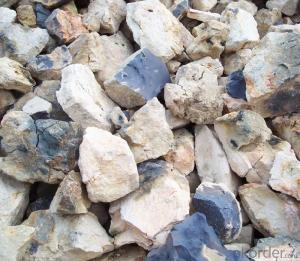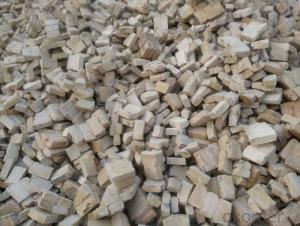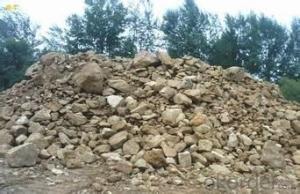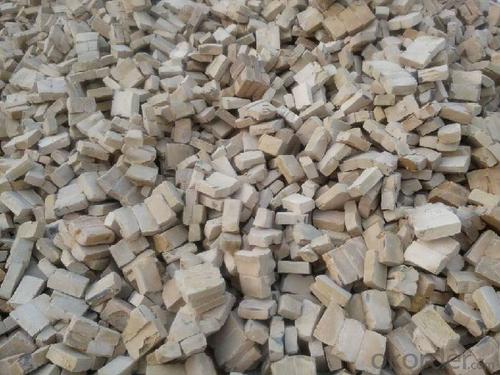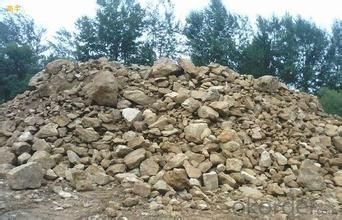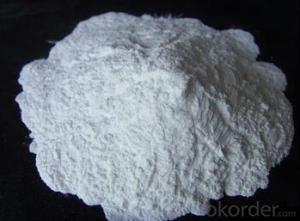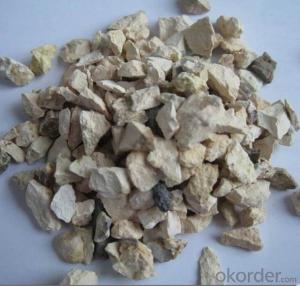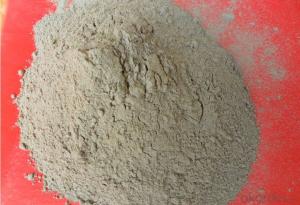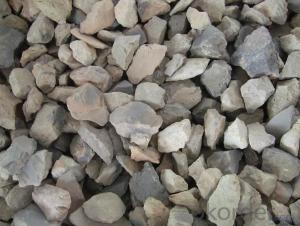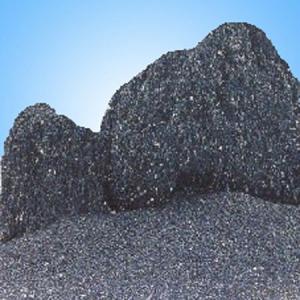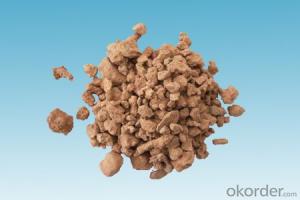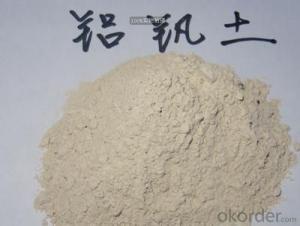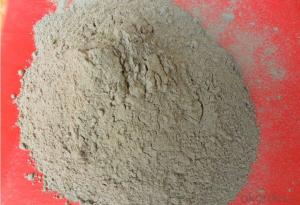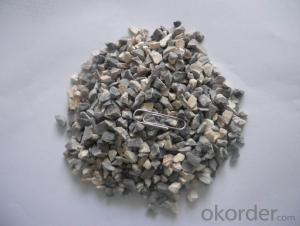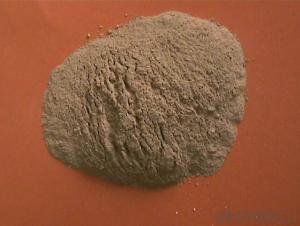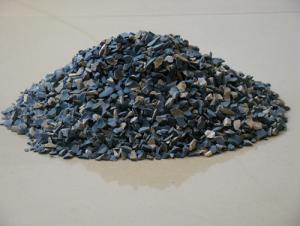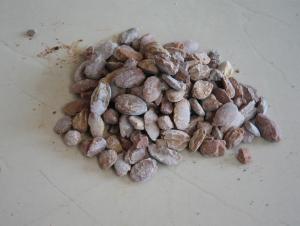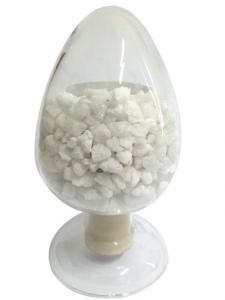Raw Materials for Refractory:Hot Sale Fire Clay Brick with Calcined Bauxite of CNBM in China
- Loading Port:
- Tianjin
- Payment Terms:
- TT OR LC
- Min Order Qty:
- 11 m.t
- Supply Capability:
- 11111111 m.t/month
OKorder Service Pledge
OKorder Financial Service
You Might Also Like
1.Structure of Calcined Bauxite Description
Bauxite (aluminous soil; Bauxite) is also called the alumina or bauxite, main ingredients are alumina, hydrated alumina containing impurities, is an earthy mineral. White or gray, brown and yellow or light red by iron. From 4 to 3.9 g/cm3 density, hardness, 1 ~ 3 is not transparent, very brittle. Very difficult to melt. Insoluble in water, soluble in sulfuric acid, sodium hydroxide solution. Mainly used for aluminium, refractory material.
2.Main Features of the Calcined Bauxite
Calcined bauxite is one of the principal ore of aluminum. Calcined bauxite contains hydrous aluminum oxides and aluminum
hydroxides, formed through the laterization of aluminous rocks in tropical and subtropical areas .Calcined bauxite is obtained by calcining (heating)superior grade bauxite at high temperature (from 85OC to 1600C) .This removes moisture there.By increasing the alumina content,compared to an alumina content of about 57%to 58% in raw bauxite, calcined bauxite has an alumina content of 84%to88%.The heating is carried out in rotary kilns.
3.Main usage of the Calcined Bauxite
(1) aluminium industry. Used in national defense, aerospace, automotive, electronics, chemical industry, daily necessities, etc.
(2) precision casting. Alumina clinker made after the mould precision casting processed into fine powder. Used in military industry, aerospace, communications, instrumentation, machinery and medical equipment department.
(3) is used for refractory products. High bauxite clinker refractoriness is as high as 1780, chemical stability strong, and good physical properties.
(4) aluminum silicate refractory fiber. With light weight, high temperature resistance, good thermal stability, low thermal conductivity, heat capacity is small and the advantages of resistance to mechanical shock. Used in iron and steel, nonferrous metallurgy, electronics, petroleum, chemical, aerospace, atomic energy, defense and other industries.
(5) in magnesia and bauxite clinker as raw materials, add the appropriate binder, used for pouring ladle whole ladle lining has particularly good effects.
(6) manufacture alumina cement, abrasive materials, ceramic industry and chemical industry can be aluminum of various compound.
4. Calcined Bauxite Images
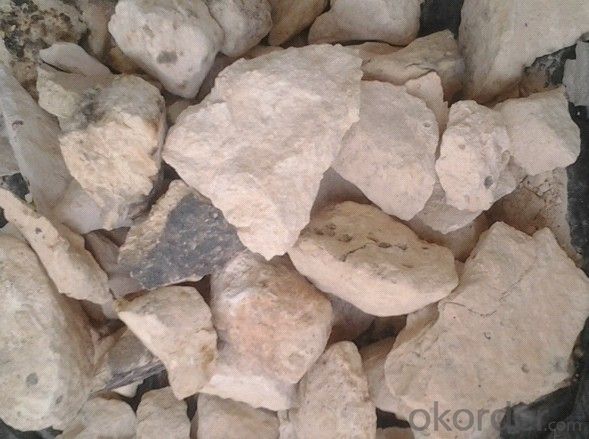
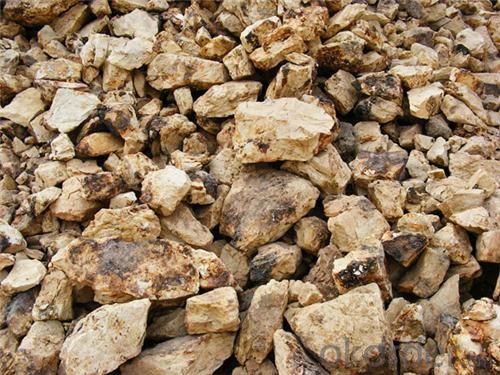
5. Calcined Bauxite Specification
The physical and chemical indicators
Item | RN-42 | RN-40 | RN-36 |
AL2O3 /% | ≥42 | ≥40 | ≥36 |
| Refractoriness/ °C | ≥1750 | ≥1730 | ≥1690 |
Apparent porosity/ % | ≤24 | ≤24 | ≤26 |
Cold crushing strength/ Mpa | ≥29.4 | ≥24.5 | ≥19.6 |
Refractoriness under load/ °C | ≥1400 | ≥1350 | ≥1300 |
Reheating Linear Change/% | 0~ -0.4 (1450°C,2h) | 0~ -0.3 (1350°C,2h) | 0~ -0.5 (1350°C,2h) |
Thermal shock resistance/cycle | This test must be conducted.The data of the test shall be included in the quality certificate. | ||
Common sizes
Straight type | Arch type | Wedge type |
L×W×H (mm) 230×114×65 230×114×75 230×114×32 220×110×60 220×110×50 220×110×40 220×110×30 | L×W×H/h (mm) 230×114×65/55 230×114×65/45 230×114×65/59 220×110×65/50 220×110×75/65 220×110×60/40 | L×W×H/h (mm) 230×114×65/55 230×114×65/45 220×110×75/65 220×110×60/40 |
Other sizes according to customer requirements | ||
6.FAQ of Calcined Bauxite
1). Q: Are you a factory or trading company?
A: We are a factory.
2). Q: Where is your factory located? How can I visit there?
A: Our factory is located in ShanXi, HeNan, China. You are warmly welcomed to visit us!
3). Q: How can I get some samples?
A: Please connect me for samples
4). Q: Can the price be cheaper?
A: Of course, you will be offered a good discount for big amount.
- Q: What are unshaped fire-resisitance materials?
- Refractory castable, refractory plastic material, usually classified according to construction and manufacture method, unfired bricks precast block, refractory pressed into material, refractory cast material, refractory coating, refractory ramming material there are many classification methods
- Q: How long is the duration of fire resistance of autoclaved flyash-lime bricks?
- How long is the duration of fire resistance of autoclaved flyash-lime bricks?
- Q: How to understand qualitative and qualitative refractory materials?
- Such as amorphous refractory castable, referred to as bulk loading, cast material, ramming material, refractory clay etc., utensils and other special products. Amorphous refractory material products, refractory heat insulating bricks and experimental and industrial crucible, spraying materials, such as burning bricks, electric melting brick, turn it into required shape and process heat treatment in where it is used.
- Q: Who knows the model of fireproofing materials?
- Inorganic binder: it mainly includes sodium silicate, gypsum, phosphate, cement,etc; refractory mineral filler: aluminium oxide, asbestos powder, calcium carbonate, perlite, cornstarch,etc; nonflammable organic resin: it mainly includes polyvinyl chloride, perchloro-ethylene, chlorinated rubber, neoprene latex, epoxy resin, phenol resin,etc. Nonflammable fireproof addictive: it mainly includes phosphorus, halogens, nitrogen organic compounds (chlorinated paraffins, TBP ( tributyl phosphate ), decabromodiphenyl ether), and borate series (boric acid, zinc borate, aluminium borate), antimony series, aluminium series, zirconium series and other inorganic compounds.
- Q: who knows the requirements of refractory for forge furnace?
- Here is the requirements of refractory for forge furnace: according to the chemical properties,casting fireproof materials are divided into three major categories: acidic, neutral and alkaline refractory materials. alkaline and neutral refractory materials are commonly used, such as alkaline magnesia-carbon bricks and burned magnesite bricks, magnesite-chrome bricks, magnesium-calcium brick, neutral high alumina brick, corundum brick, clay brick, etc., shapelessness materials include: castable refractory, ramming?mass, gunning mix, coating, dry vibrating materials and so on! Hope my answer can help you.
- Q: What is the material composition of the new fire-resistant coating?
- New fire-resistant coating generally consists of base material, dispersion media, flame retardants, fillers, additives (plasticizers, stabilizers, waterproofing agents, moisture, etc.). (1) Base material is the basis of the composition of the coating, and it is the main film-forming substance, playing a decisive role in coating performance . For fire-resistant coating, its base material must be capable of matching with the flame retardant to constitute an organic fireproofing system. The base material commonly employed at home and abroad includes inorganic and organic film-forming material. Inorganic film-forming materials include silicate. Si03, K2 Si03Na2 Si03), silica and phosphate [Al. (HPO.). ] ect. There are a wide range of organic film-forming substance, usually flame retardent organic synthetic resins, such as phenolic resins, halogenated alkyd resins, polyester, halogenated olefin resins (such as vinyl chloride resin), amino resin (melamine resin, urea resin, etc. ), tar-based resins, furan resins, heterocyclic resins (e.g., polyamide-imide, polyimide, etc.), organic elements resins (e.g. silicone resin), rubber (halogenated rubber such as chlorinated natural rubber) and so on. There are numerous latex taking water as solvent. www.hc3600.
- Q: What is the fire endurance of fireproof glass cotton?
- The highest temperature of fireproofing glass wool can be above 200 degrees, so it can be used for a long time,it's difficult to judge the special usage time, but its usually about 3 months and 8 hours every day.
- Q: Does anyone know what is the use of waste refractory materials?
- Waste refractory materials can be 1, Recycled to do the aggregate and powder of castable , or make bricks. 2, can be reused after smash.3, Metal silicon is an anti oxidant in refractory material, mainly functioning as he oxidation resistance, at the same time improve its toughness.
- Q: The manufacturing technique of refractory material
- The major components of alkaline refractory material include magnesium oxide and calcium oxide. The commonly used alkaline refractory material is magnesia bricks. The magnesia bricks with 80%~85% magnesium oxide has good resistance to basic slag and slag and higher refractoriness than clay bricks and silica bricks. It is mainly used in open hearth, oxygen blowing of converter, electric furnace and smelting non-ferrous metal equipment and other high temperature equipment. Refractory materials applied on special occasions include high temperature oxide refractory materials such as alumina, lanthanum oxide, beryllium oxide, calcium oxide, zirconium oxide, etc., refractory compounds such as carbide, nitride, boride, silicide and sulfide, etc., and high temperature composite materials, including metal ceramics, high temperature inorganic coating and fiber reinforced ceramics, etc. Consult and find reference for efractory materials production equipment, go to http://hi.baidu.
- Q: what's the requirements of refractory for forge furnace?
- accurate answers please refer to Current Situation and Development Trend of Refractory Material in Heating Furnace ,Quality Requirement of Modern Industrial Furnace Refractory Material(GB/T17638-1998) Standard,Furnace-constructing Technology, if you need the mail box, please senf e-mail to me, my QQ number: 249704548.
Send your message to us
Raw Materials for Refractory:Hot Sale Fire Clay Brick with Calcined Bauxite of CNBM in China
- Loading Port:
- Tianjin
- Payment Terms:
- TT OR LC
- Min Order Qty:
- 11 m.t
- Supply Capability:
- 11111111 m.t/month
OKorder Service Pledge
OKorder Financial Service
Similar products
Hot products
Hot Searches
Related keywords

